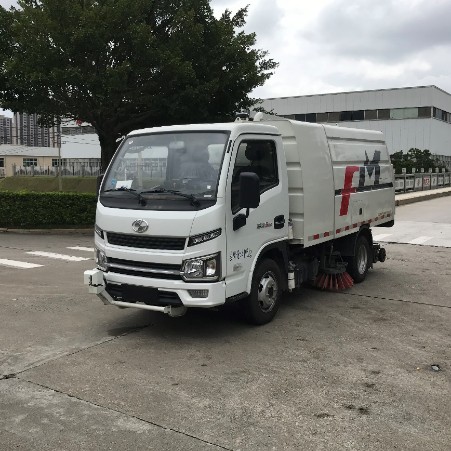In the hustle and bustle of modern city life, keeping the streets clean is a tedious and often underappreciated task. Street sweepers navigate the city’s various streets and alleyways, ensuring no debris, pollutants, or hazards. But do you know how they work? How do the different components function together? This article will reveal the inner workings of these machines and shed light on how these complex systems operate.

Types of Street Sweepers
To meet different cleaning tasks and adapt to various urban environments, two main types of street sweepers have been designed:
Mechanical Sweepers
As the name suggests, mechanical sweepers use rotating brushes to clear debris from the streets. These brushes sweep the waste towards the center of the vehicle, where a set of main brushes collects the debris onto a conveyor belt, which then transports it to the collection hopper. They are particularly effective at handling smaller debris such as gravel, mud, or leaves, making them vital for street cleaning in urban areas.
Vacuum Sweepers
Vacuum sweepers operate differently from mechanical sweepers, relying on suction to remove fine dust, sand, and small debris particles. These machines typically combine brushes and vacuum systems to ensure thorough cleaning. They are primarily used on urban streets to maintain cleanliness continuously.

Components of Street Sweepers
Street sweepers are complex systems made up of various components that work together to perform their cleaning tasks. These include brushes, vacuum mechanisms, water spray systems, and propulsion systems. Each system serves a unique purpose but works in harmony with the others.
Brushes
The brush system is the most basic component of a street sweeper. They can be categorized into side brushes and main brushes. Side brushes are located at the front of the vehicle and direct debris toward the center. The main brushes, located underneath the vehicle, rotate horizontally to sweep debris into the collection hopper.
Vacuum/Suction Mechanism
In vacuum sweepers, the vacuum mechanism is the central function. It includes a high-powered fan that creates suction, pulling debris into the waste container. This system typically works in conjunction with filters to capture fine particles.
Water Spray System
During street cleaning, dust can easily become airborne. This is where the water spray system comes into play. The spray system moistens the street surface, preventing dust from flying into the air. It typically includes nozzles and a water tank.
Propulsion System
Street sweepers are often modified vehicles, so they retain the functionalities of a regular vehicle, including an engine and hydraulic systems, for movement and control.

How the Process Works
- The sweeper begins moving forward, with the side brushes rotating rapidly and directing debris to the center.
- The main broom in the center collects the debris and transfers it to a conveyor belt or directly into the hopper.
- For vacuum sweepers, the suction mechanism activates to remove finer particles and lighter debris.
- As the sweeper operates, the water spray system simultaneously activates to prevent dust clouds from forming.
- Finally, the collected debris is stored in the vehicle’s hopper, which is later transported to a waste disposal facility.
Advantages of Street Sweepers
Street sweepers offer numerous advantages, the most important being their efficiency in creating cleaner, safer, and more sustainable urban environments. Additionally, mechanical sweeping is faster and more cost-effective than manual cleaning.
Conclusion
Street sweepers are complex yet highly efficient tools for urban cleanliness. From simple mechanical brushes to advanced vacuum systems, each component plays a distinct role, yet they work together seamlessly to keep streets clean and protect the environment.






